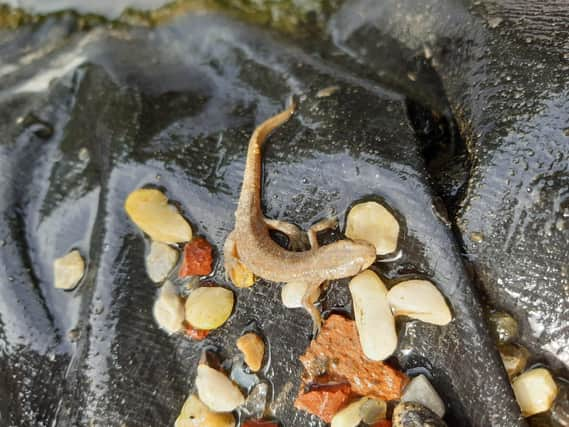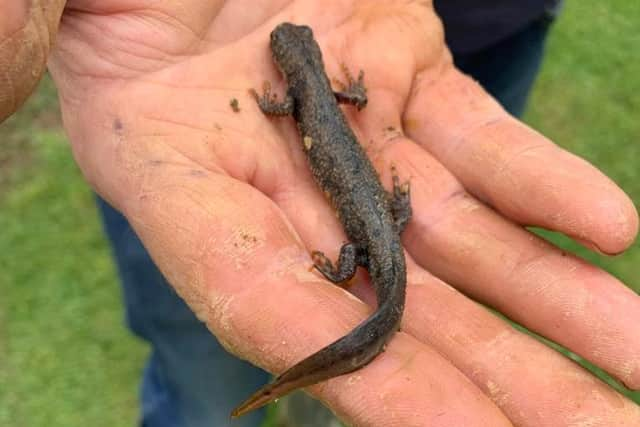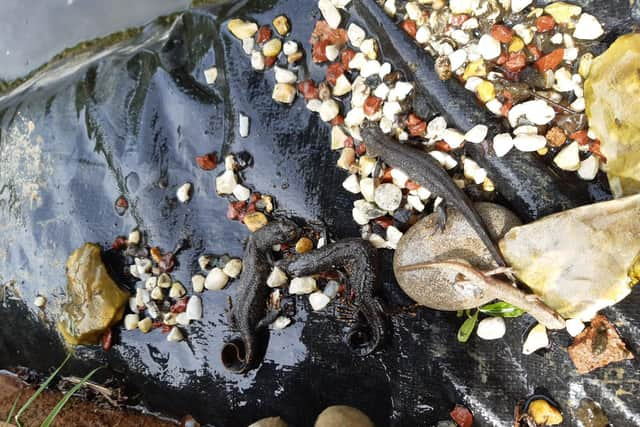Villager-funded wildlife survey uncovers bats, newts and rare protected birds in rural spot near Corby


A survey funded by people living around Middleton and Ashley near Corby has discovered an array of wonderful wildlife living around ponds in the Welland Valley.
The group clubbed together to ensure that the wildlife in the area is properly recorded after proposed developments threatened the local natural habitat.
Advertisement
Hide AdAdvertisement
Hide AdParts of the Welland Valley are classed as a ‘Red Zone’ for great crested newts but, despite registered sightings, there is very little contemporary data available on size and health of the local population.


As a result of recent local sighting, villagers around Middleton and a range of other conservation donors raised funds to commission a comprehensive ecology survey.
The survey focused on a 1km stretch of the beautiful Welland Valley, between the villages of Ashley and Middleton. The area has numerous ponds, ancient fields and hedgerows, which are the ideal habitat for a large diversity of wildlife.
The great crested newt (GCN) is an endangered and listed protected priority species in the UK. It is our largest newt, breeding in ponds during the spring and spending the rest of the year feeding on invertebrates in hedgerows, marshes and grasslands.
Advertisement
Hide AdAdvertisement
Hide AdThese newts need the right habitat to survive and thrive and their breeding and resting sites are protected under UK and European law. However, these habitats are increasingly under threat through development and climate change which can disturb breeding and destroy the environment they need to survive.


Five ponds were surveyed, from six identified within the survey area. Weather conditions in April and May were unseasonably cold, but despite this, the majority of the ponds surveyed scored well on the Habitat Survey Index (HSI). The ponds contained a wide range of amphibians and invertebrates, and pond trappings captured four GCNs and 18 smooth newts.
The mature established hedgerows, woodland blocks and grass tussocks provide connectivity in all direction and overwintering habitat. The ponds themselves will hold water over the year, only likely to dry up during prolonged dry spells.
The survey was undertaken by accredited ecologists Lockhart Garratt and involved detailed surveying and monitoring of the ponds over six weeks. Apart from providing invaluable data on
Advertisement
Hide AdAdvertisement
Hide AdGCNs, the survey also recorded evidence on other important species in the area including, bats and protected birds.
Two bat species were recorded; the pipistrelle and the Daubenton’s bat. The survey identified a number of bird species which are listed as UK Birds of Conservation Concern (BOCC).
Three red listed, protected bird species were recorded; the cuckoo, song thrush and yellowhammer. Red listed birds are globally threatened species with severe UK decline in breeding populations. They are considered UK priority species, which should be included in local Biodiversity Action Plans.
Amber listed birds are species with an unfavourable conservation status in Europe, suffering decline and with less than 300 breeding pairs in the UK. The survey recorded three amber listed species; the dunnock, green woodpecker and tawny owl, along with 13 other species identified from the BOCC listing including buzzards, red kites, grey heron, reed warblers and chiffchaffs.